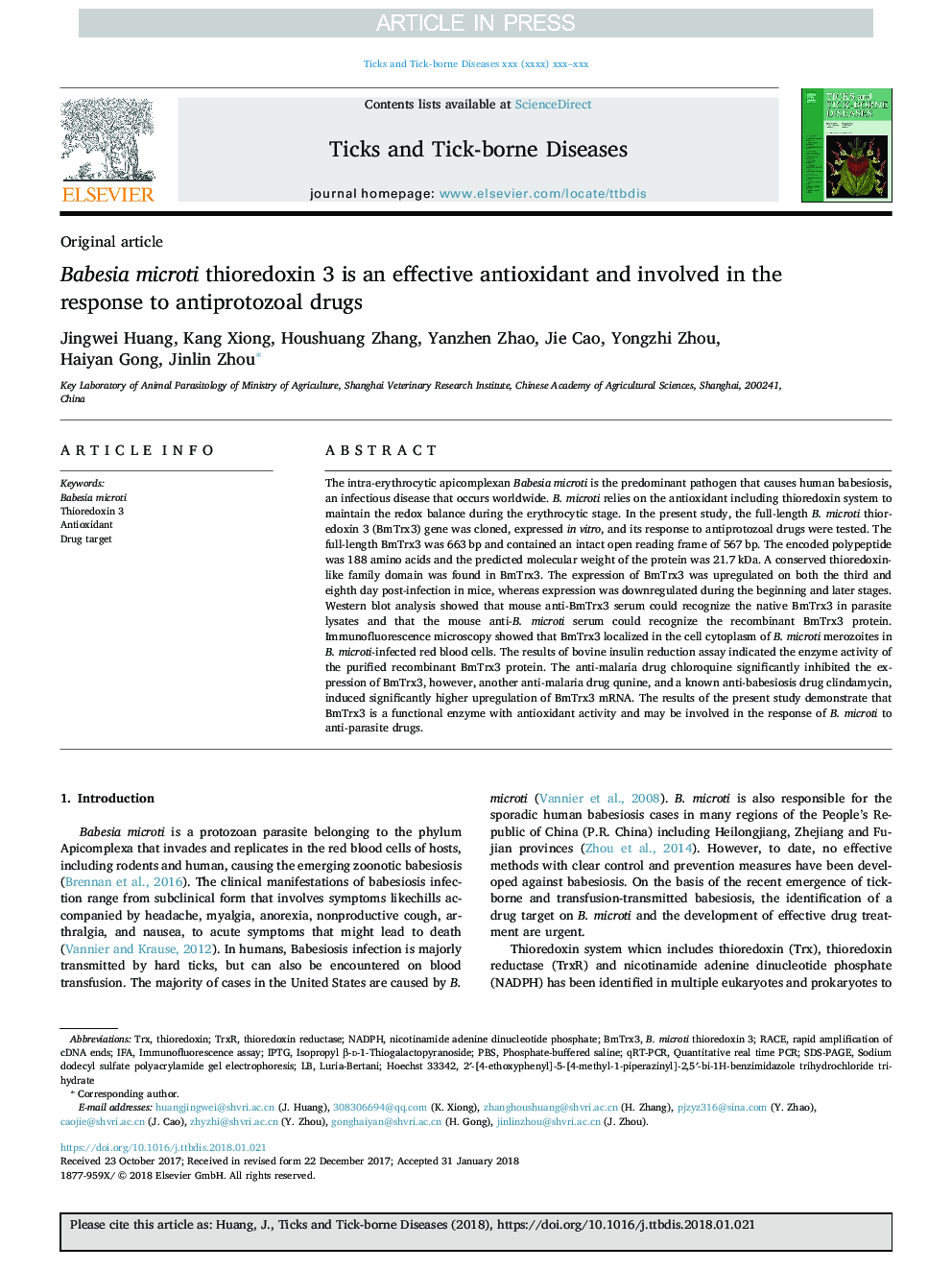| Article ID | Journal | Published Year | Pages | File Type |
|---|---|---|---|---|
| 8507311 | Ticks and Tick-borne Diseases | 2018 | 9 Pages |
Abstract
The intra-erythrocytic apicomplexan Babesia microti is the predominant pathogen that causes human babesiosis, an infectious disease that occurs worldwide. B. microti relies on the antioxidant including thioredoxin system to maintain the redox balance during the erythrocytic stage. In the present study, the full-length B. microti thioredoxin 3 (BmTrx3) gene was cloned, expressed in vitro, and its response to antiprotozoal drugs were tested. The full-length BmTrx3 was 663â¯bp and contained an intact open reading frame of 567â¯bp. The encoded polypeptide was 188 amino acids and the predicted molecular weight of the protein was 21.7â¯kDa. A conserved thioredoxin-like family domain was found in BmTrx3. The expression of BmTrx3 was upregulated on both the third and eighth day post-infection in mice, whereas expression was downregulated during the beginning and later stages. Western blot analysis showed that mouse anti-BmTrx3 serum could recognize the native BmTrx3 in parasite lysates and that the mouse anti-B. microti serum could recognize the recombinant BmTrx3 protein. Immunofluorescence microscopy showed that BmTrx3 localized in the cell cytoplasm of B. microti merozoites in B. microti-infected red blood cells. The results of bovine insulin reduction assay indicated the enzyme activity of the purified recombinant BmTrx3 protein. The anti-malaria drug chloroquine significantly inhibited the expression of BmTrx3, however, another anti-malaria drug qunine, and a known anti-babesiosis drug clindamycin, induced significantly higher upregulation of BmTrx3 mRNA. The results of the present study demonstrate that BmTrx3 is a functional enzyme with antioxidant activity and may be involved in the response of B. microti to anti-parasite drugs.
Keywords
Hoechst 33342PBSBabesia microtiIPTGIFANADPHqRT-PCRTrxRTrximmunofluorescence assayAntioxidantSDS-PAGESodium dodecyl sulfate polyacrylamide gel electrophoresisisopropyl β-D-1-thiogalactopyranosidethioredoxin reductaserapid amplification of cDNA endsthioredoxinquantitative real time PCRLuria-BertaniPhosphate-buffered salineRacenicotinamide adenine dinucleotide phosphateDrug target
Related Topics
Life Sciences
Agricultural and Biological Sciences
Animal Science and Zoology
Authors
Jingwei Huang, Kang Xiong, Houshuang Zhang, Yanzhen Zhao, Jie Cao, Yongzhi Zhou, Haiyan Gong, Jinlin Zhou,
